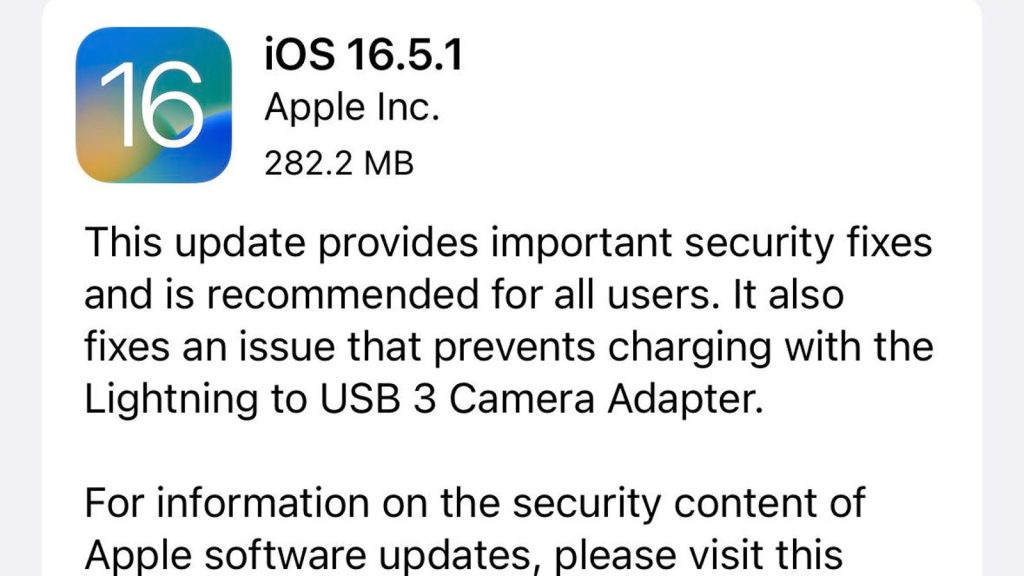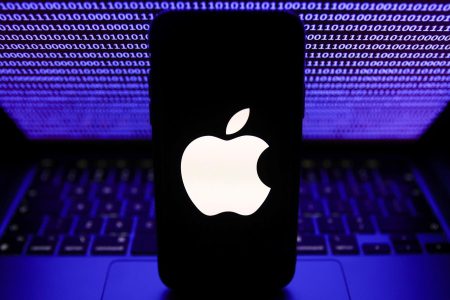Apple has released iOS 16.5.1, fixing two serious security flaws already being used in real-life iPhone attacks. Last week, I reported on the release of iOS 16.5.1 and outlined why you need to apply the update now. I can now reveal more about what exactly is fixed in iOS 16.5.1 and how it is being used in iPhone attacks.
Apple’s iOS 16.5.1 patches two already exploited security issues in WebKit—the engine that powers the Safari browser—and the Kernel at the heart of the iOS operating system.
While Apple doesn’t release much detail about what’s fixed in iOS 16.5.1 and who attacks targeted, security researchers at Kaspersky have revealed that there was a “zero click” attack using the flaws on its own staff.
A zero click attack is scary because it means you don’t have to interact with anything at all for it to make its way onto your iPhone. These types of attacks are often used to distribute spyware—a malware that allows adversaries to see and hear everything you do on your iPhone, even your WhatsApp messages and voice calls.
The iPhone Kernel is targeted in the attack fixed in iOS 16.5.1 because it is essentially the force behind Apple’s “walled garden,” according to security outfit Sophos. “Pwning the Kernel generally means that attackers get to sidestep many or most of the security controls on the device, resulting in the broadest and most dangerous sort of compromise,” Sophos’ Paul Ducklin wrote in a blog.
Kaspersky’s Triangulation Spyware Attack
Kaspersky’s blog describes how the attack patched in iOS 16.5.1 is carried out using an invisible iMessage with a malicious attachment to deliver “Triangulation spyware.” Using “a number of vulnerabilities” in the iOS operating system, it is executed on a device and installs spyware, the security outfit said.
The blog reads:
“The deployment of the spyware is completely hidden and requires no action from the user. The spyware then quietly transmits private information to remote servers: microphone recordings, photos from instant messengers, geolocation, and data about a number of other activities of the owner of the infected device.
“Despite the attack being carried out as discreetly as possible, the infection was detected by the Kaspersky Unified Monitoring and Analysis Platform (KUMA) – a native SIEM solution for security information and event management; in the beginning of the year the system detected an anomaly in our network coming from Apple devices.
“Further investigation by our team showed that several dozen iPhones of senior employees were infected with new, extremely technologically sophisticated spyware we’ve dubbed ‘Triangulation’.”
For a deeper dive into the spyware when it was first discovered, check out this article by my Straight Talking Cyber and Forbes colleague Davey Winder.
How Worried Should Be Worried About The Flaws Fixed In iOS 16.5.1?
Make no mistake—the issues fixed in iOS 16.5.1 are serious. As security researcher Sean Wright told me, they could be chained together to allow an attacker to target iPhones and iPads remotely. However, now we know more about the attack, it’s clear it is very targeted against a particular group of people.
“On the face of it, these iOS vulnerabilities are extremely worrying, but digging deeper it appears to be a largely targeted attack,” Wright says. He points out that details on how to exploit the vulnerabilities—apply them to real-life attacks—“appear to be limited”, making it unlikely the flaws will be used more widely.
Business users and high-profile figures such as journalists should be paying extra attention though, as they are the most likely targets for spyware-based attacks. Once you are hit with spyware, it isn’t easy to get rid of—although some experts suggest it can be disrupted by restarting your device.
Taking this into account, Wright says the ordinary person shouldn’t panic. However, he adds that “due to the severity of these vulnerabilities, it is extremely important you update to iOS 16.5.1 as soon as you can.”
If you haven’t already, go to your Settings > General > Software Update and download and install iOS 16.5.1 now to ensure you are protected.
Read the full article here










